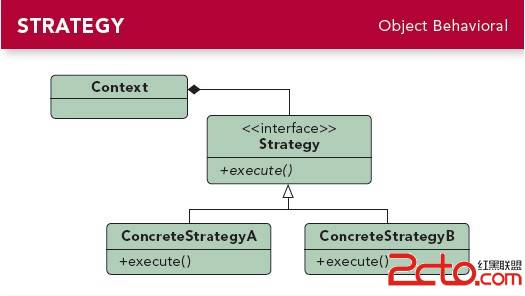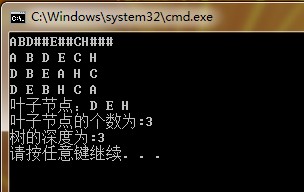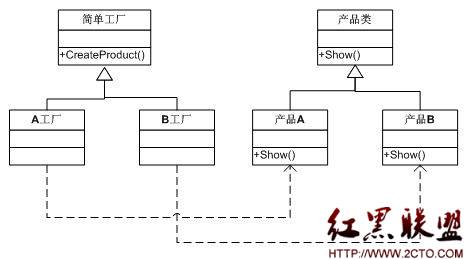C语言函数整理大全六(T-W)
函数名: tell功 能: 取文件指针的当前位置
用 法: long tell(int handle);
程序例:
#include
#include
#include
#include
int main(void)
{
int handle;
char msg[] = "Hello world";
if ((handle = open("TEST.$$$", O_CREAT | O_TEXT | O_APPEND)) == -1)
{
perror("Error:");
return 1;
}
write(handle, msg, strlen(msg));
printf("The file pointer is at byte %ld ", tell(handle));
close(handle);
return 0;
}
函数名: textattr
功 能: 设置文本属性
用 法: void textattr(int attribute);
程序例:
#include
int main(void)
{
int i;
clrscr();
for (i=0; i<9; i )
{
textattr(i ((i 1) << 4));
cprintf("This is a test ");
}
return 0;
}
函数名: textbackground
功 能: 选择新的文本背景颜色
用 法: void textbackground(int color);
程序例:
#include
int main(void)
{
int i, j;
clrscr();
for (i=0; i<9; i )
{
for (j=0; j<80; j )
cprintf("C");
cprintf(" ");
textcolor(i 1);
textbackground(i);
}
return 0;
}
函数名: textcolor
功 能: 在文本模式中选择新的字符颜色
用 法: void textcolor(int color);
程序例:
#include
int main(void)
{
int i;
for (i=0; i<15; i )
{
textcolor(i);
cprintf("Foreground Color ");
}
return 0;
}
函数名: textheight
函数名: vfprintf
功 能: 送格式化输出到一流中
用 法: int vfprintf(FILE *stream, char *format, va_list param);
程序例:
#include
#include
#include
FILE *fp;
int vfpf(char *fmt, ...)
{
va_list argptr;
int cnt;
va_start(argptr, fmt);
cnt = vfprintf(fp, fmt, argptr);
va_end(argptr);
return(cnt);
}
int main(void)
{
int inumber = 30;
float fnumber = 90.0;
char string[4] = "abc";
fp = tmpfile();
if (fp == NULL)
{
perror("tmpfile() call");
exit(1);
}
vfpf("%d %f %s", inumber, fnumber, string);
rewind(fp);
fscanf(fp,"%d %f %s", &inumber, &fnumber, string);
printf("%d %f %s ", inumber, fnumber, string);
fclose(fp);
return 0;
}
函数名: vfscanf
功 能: 从流中执行格式化输入
用 法: int vfscanf(FILE *stream, char *format, va_list param);
程序例:
#include
#include
#include
FILE *fp;
int vfsf(char *fmt, ...)
{
va_list argptr;
int cnt;
va_start(argptr, fmt);
cnt = vfscanf(fp, fmt, argptr);
va_end(argptr);
return(cnt);
}
int main(void)
{
int inumber = 30;
float fnumber = 90.0;
char string[4] = "abc";
fp = tmpfile();
if (fp == NULL)
{
perror("tmpfile() call");
exit(1);
}
fprintf(fp,"%d %f %s ",inumber,fnumber,string);
rewind(fp);
vfsf("%d %f %s",&inumber,&fnumber,string);
printf("%d %f %s ",inumber,fnumber,string);
fclose(fp);
return 0;
}
函数名: vprintf
功 能: 送格式化输出到stdout中
用 法: int vprintf(char *format, va_list param);
程序例:
#include
#include
int vpf(char *fmt, ...)
{
va_list argptr;
int cnt;
va_start(argptr, format);
cnt = vprintf(fmt, argptr);
va_end(argptr);
return(cnt);
}
int main(void)
{
int inumber = 30;
float fnumber = 90.0;
char *string = "abc";
vpf("%d %f %s ",inumber,fnumber,string);
return 0;
}
函数名: vscanf
功 能: 从stdin中执行格式化输入
用 法: int vscanf(char *format, va_list param);
程序例:
#include
#include
#include
int vscnf(char *fmt, ...)
{
va_list argptr;
int cnt;
printf("Enter an integer, a float, and a string (e.g. i,f,s,) ");
va_start(argptr, fmt);
cnt = vscanf(fmt, argptr);
va_end(argptr);
return(cnt);
}
int main(void)
{
int inumber;
float fnumber;
char string[80];
vscnf("%d, %f, %s", &inumber, &fnumber, string);
printf("%d %f %s ", inumber, fnumber, string);
return 0;
}
函数名: vsprintf
功 能: 送格式化输出到串中
用 法: int vsprintf(char *string, char *format, va_list param);
程序例:
#include
#include
#include
char buffer[80];
int vspf(char *fmt, ...)
{
va_list argptr;
int cnt;
va_start(argptr, fmt);
cnt = vsprintf(buffer, fmt, argptr);
va_end(argptr);
return(cnt);
}
int main(void)
{
int inumber = 30;
float fnumber = 90.0;
char string[4] = "abc";
vspf("%d %f %s", inumber, fnumber, string);
printf("%s ", buffer);
return 0;
}
函数名: vsscanf
功 能: 从流中执行格式化输入
用 法: int vsscanf(char *s, char *format, va_list param);
程序例:
#include
#include
#include
char buffer[80] = "30 90.0 abc";
int vssf(char *fmt, ...)
{
va_list argptr;
int cnt;
fflush(stdin);
va_start(argptr, fmt);
cnt = vsscanf(buffer, fmt, argptr);
va_end(argptr);
return(cnt);
}
int main(void)
{
int inumber;
float fnumber;
char string[80];
vssf("%d %f %s", &inumber, &fnumber, string);
printf("%d %f %s ", inumber, fnumber, string);
return 0;
}
函数名: wherex
功 能: 返回窗口内水平光标位置
用 法: int wherex(void);
程序例:
#include
int main(void)
{
clrscr();
gotoxy(10,10);
cprintf("Current location is X: %d Y: %d ", wherex(), wherey());
getch();
return 0;
}
函数名: wherey
功 能: 返回窗口内垂直光标位置
用 法: int wherey(void);
程序例:
#include
int main(void)
{
clrscr();
gotoxy(10,10);
cprintf("Current location is X: %d Y: %d ", wherex(), wherey());
getch();
return 0;
}
函数名: window
功 能: 定义活动文本模式窗口
用 法: void window(int left, int top, int right, int bottom);
程序例:
#include
int main(void)
{
window(10,10,40,11);
textcolor(BLACK);
textbackground(WHITE);
cprintf("This is a test ");
return 0;
}
函数名: write
功 能: 写到一文件中
用 法: int write(int handel, void *buf, int nbyte);
程序例:
#include
#include
#include
#include
#include
#include
int main(void)
{
int handle;
char string[40];
int length, res;
/*
Create a file named "TEST.$$$" in the current directory and write
a string to it. If "TEST.$$$" already exists, it will be overwritten.
*/
if ((handle = open("TEST.$$$", O_WRONLY | O_CREAT | O_TRUNC,
S_IREAD | S_IWRITE)) == -1)
{
printf("Error opening file. ");
exit(1);
}
strcpy(string, "Hello, world! ");
length = strlen(string);
if ((res = write(handle, string, length)) != length)
{
printf("Error writing to the file. ");
exit(1);
}
printf("Wrote %d bytes to the file. ", res);
close(handle);
return 0;
}
struct xfcb {
char xfcb_flag; /* Contains 0xff to indicate xfcb */
char xfcb_resv[5]; /* Reserved for DOS */
char xfcb_attr; /* Search attribute */
struct fcb xfcb_fcb; /* The standard fcb */
};
函数名: textmode
功 能: 将屏幕设置成文本模式
用 法: void textmode(int mode);
程序例:
#include
int main(void)
{
textmode(BW40);
cprintf("ABC");
getch();
textmode(C40);
cprintf("ABC");
getch();
textmode(BW80);
cprintf("ABC");
getch();
textmode(C80);
cprintf("ABC");
getch();
textmode(MONO);
cprintf("ABC");
getch();
return 0;
}
函数名: textwidth
功 能: 返回
补充:软件开发 , C语言 ,




